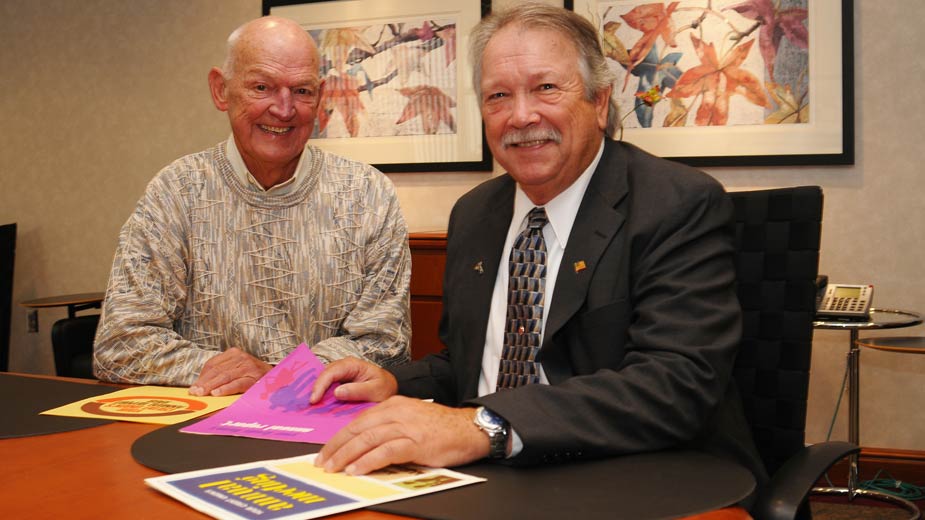First Members of Seven Seventeen Amazed by Growth
WARREN, Ohio — As the Seven Seventeen Credit Union celebrates its 60th anniversary, two of its first members remain members, “amazed” – both used that word – by its growth and success.
Al Shinosky of Howland and George Houtz of Warren have long retired – the former in 2001, the latter in 1985 – but they used Seven Seventeen to save, finance cars and buy houses. It remains their primary financial institution.
The year was 1957 when 15 employees at Packard Electric, all tool-and-die makers who belonged to IUE Local 717, sought a charter after paying $5 each to start a credit union.
Those funds were kept in a cigar box, says Gary Soukenik, CEO of Seven Seventeen, and the members had $5 a week deducted from their paychecks to build the treasury.
The credit union office was an “8-by-8 room on the second floor of the union hall,” Shinosky remembers. “From that small office, I can’t believe where they are now.”
“The room was no bigger than my bathroom,” Houtz says, and it was always busy.
A fellow worker, a woman, approached him about joining the credit union, Houtz remembers. “How much? I asked.”
“Five dollars every week,” she responded.
“I’ve got a wife and four kids, I told her.” He was making only $39 a week, Houtz says.
She warned him of the risk he was taking, Houtz said, of the uncertain future the credit union faced.
“I had the feeling it may go; it may not go,” he recalls. But after four weeks he was confident the credit union “would fly.”
“Back in 1957,” Shinosky remembers, “I just got back from layoff and a guy suggested I join. I didn’t even know what a credit union was.”
The idea that $5 would be deducted from each paycheck before he got it appealed to him and he joined.
Through Seven Seventeen, Houtz financed “a brand-new Edsel,” he says. “I drove it to Pennsylvania and got hit by a semi. That ruined the Edsel.” (Ford Motor Co. built Edsels from 1958 through 1960.)
Houtz, later a director of the credit union, used it to help buy a brand-new house in 1961 on the west side of Warren. He paid $13,000.
Shinosky also used Seven Seventeen to arrange his first mortgage. “I was getting married and building a house,” he says. “I went to the second floor [of the union hall]. I was going to close out my account. I was going to use my savings as the down payment. But I was talked into keeping $5 in it. And I’m glad I did.”
Shinosky and Houtz have welcomed and used the products Seven Seventeen has introduced over its six decades, such as ATMs, credit and debit cards, online banking. “Whatever I went in there for, I got,” Houtz says. “They’re very nice people.”
“They’ve always been there to help me,” Shinosky adds.
They’ve kept their checking and savings accounts.
Seven Seventeen “gave me a lot of security after it got started,” Houtz says, that is, after his first four weeks as a member.
He is proud of his “real low membership account number” – Seven Seventeen has a membership of 76,000 today – that has only two digits.
Pictured at top: Al Shinosky reminisces about the founding of Seven Seventeen Credit Union with Jack Wilster, chairman of its board of directors.
RELATED:
Credit Unions Teach Members Basics of Handling Money
Copyright 2024 The Business Journal, Youngstown, Ohio.



